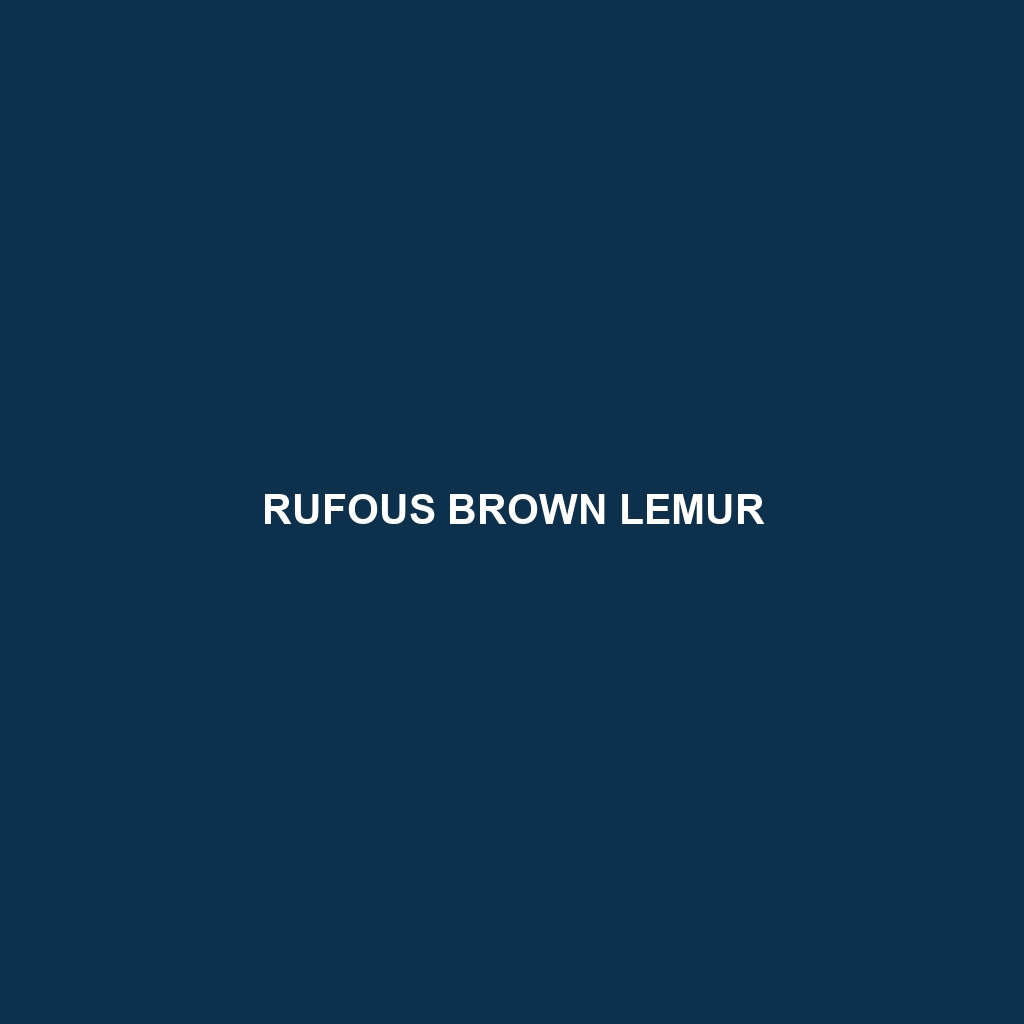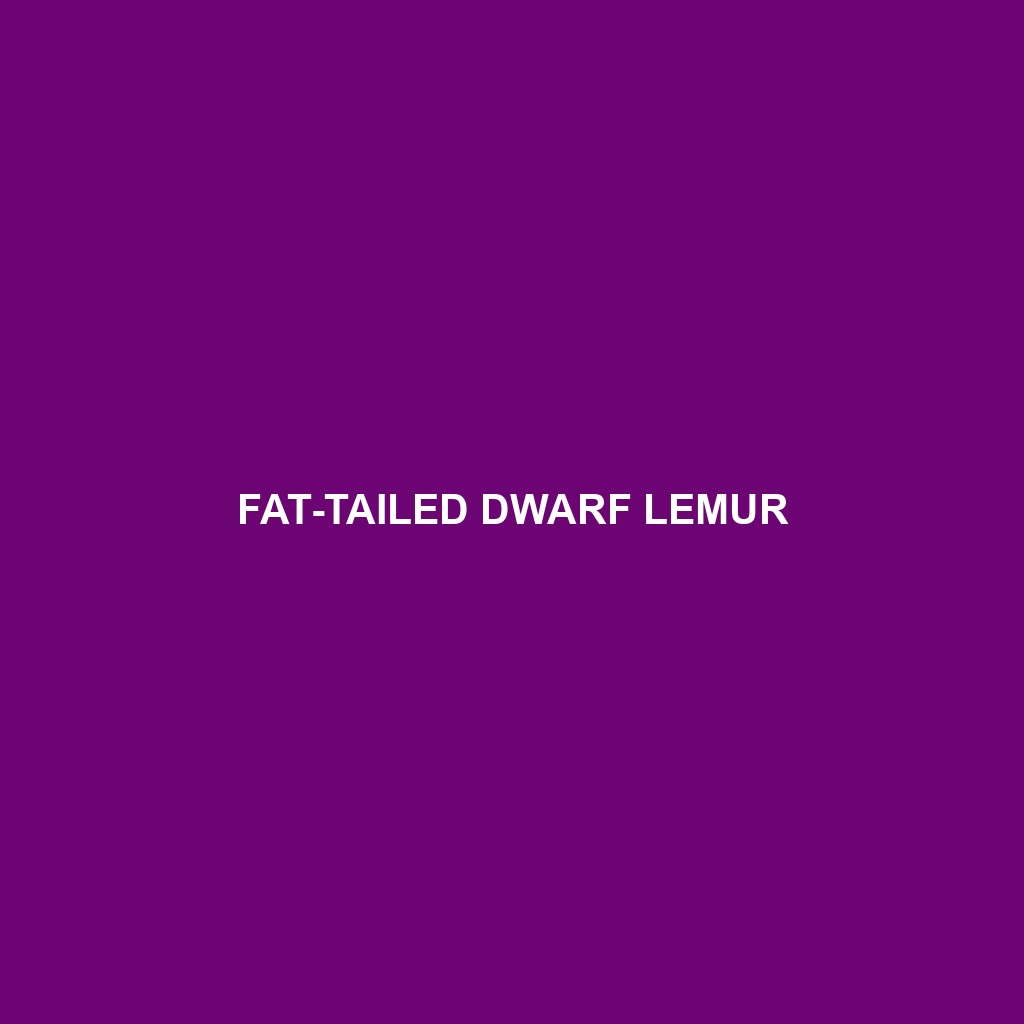Discover the fascinating world of the Rufous Brown Lemur (<i>Prolemur simus</i>), a unique primate native to Madagascar's rainforests. With its striking reddish-brown fur, matriarchal social structure, and vital role as a seed disperser, this endangered species faces threats from habitat loss and hunting. Learn about their behaviors, diet, and conservation efforts aimed at preserving these agile climbers for future generations.
Tag: diet
White-collared Brown Lemur
Explore the fascinating world of the **White-collared Brown Lemur**, a medium-sized primate native to Madagascar’s lush tropical rainforests. Known for its striking brownish-gray fur and distinct white collar, this nocturnal creature thrives in social family groups and plays a crucial role in its ecosystem as a seed disperser. However, facing threats of habitat destruction and the illegal pet trade, this **endangered** species requires urgent conservation efforts to secure its future.
Verreaux’s Sifaka
Explore the fascinating world of Verreaux's Sifaka, a striking primate native to Madagascar's unique deciduous forests. With their distinctive white fur, social structures, and impressive leaping abilities, these vulnerable creatures play a crucial role in their ecosystem. Discover their habitat, diet, and the conservation efforts necessary to protect their future.
Indri
Discover the fascinating Indri, Madagascar's largest lemur, known for its striking black and white coat and haunting vocalizations. Inhabiting the rich rainforests, this critically endangered species plays a crucial role in seed dispersal, supporting its ecosystem's health. Explore their unique behavior, diet, and the urgent conservation efforts needed to protect these remarkable primates.
Edwards’s Monkey Lemur
Discover the captivating life of the endangered Edwards's Monkey Lemur, a small, nocturnal primate native to Madagascar's lush rainforests. With its distinctive pale brown fur, large expressive eyes, and agile movements, this species plays a crucial role in its ecosystem through seed dispersal. Learn about its intriguing behaviors, diet, and the challenges it faces due to habitat destruction.
Sibree’s Dwarf Lemur
Discover the fascinating world of Sibree's Dwarf Lemur, a nocturnal primate native to the rainforests of Madagascar. With its unique adaptations, diet, and role in seed dispersal, this Vulnerable species is crucial for forest biodiversity. Explore the challenges it faces and the significance of conservation efforts for its survival.
Fat-tailed Dwarf Lemur
Discover the fascinating world of the **Fat-tailed Dwarf Lemur**, a charming species native to Madagascar's lush rainforests. With its unique fat-storing tail and nocturnal habits, this **Endangered** lemur not only plays a crucial role in its ecosystem as a seed disperser but also captivates with its social behaviors and specialized diet. Learn more about its habitat, physical traits, and conservation challenges in our latest blog post.
Napo Saki
Discover the Napo Saki, a fascinating primate native to the Amazon Basin, characterized by its vibrant fur, agile climbing abilities, and complex social structures. This vulnerable species plays a crucial role in its ecosystem through seed dispersal, while its notable adaptability and intelligence highlight its significance in the rainforest's intricate web of life. Learn more about their habitat, behavior, and conservation challenges in our latest blog post.
White-faced Saki
Discover the fascinating world of the White-faced Saki, a vibrant monkey native to the tropical rainforests of South America. With its striking white facial fur and playful demeanor, this diurnal species plays a crucial role in its ecosystem as a seed disperser, while facing threats from habitat loss. Explore their unique behaviors, diet, and the challenges they face in the wild.
Philippine Tarsier
Discover the fascinating world of the Philippine Tarsier (Tarsius syrichta), a small primate known for its extraordinary agility, large eyes, and unique nocturnal habits. Found in the lush forests of the Philippines, these "living fossils" are vital to their ecosystems, primarily preying on insects and small vertebrates. However, with their vulnerable status due to habitat loss, the conservation of this remarkable species is crucial for maintaining biodiversity in their native environments.









